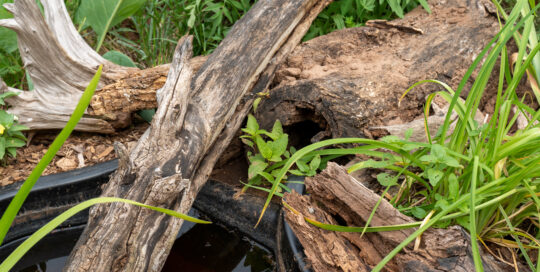Protect yourself from ticks
Views: 1322

My love of wildlife does not extend to ticks. Ticks are vectors (the agent of transmission) for 16 different diseases in the U.S., a number that seems to grow every time I visit the CDC website.
Personal Connection
For me, tickborne disease is personal. Both my mother and my father were diagnosed with tickborne diseases, and my mom almost died from hers. She recovered after a week in a coma, but she suffered nerve damage in one leg that has affected her gait ever since. My dad’s brush with Rocky Mountain Spotted fever (RMSF) left him in the hospital for days. I have friends who still struggle from their Lyme infections, and other friends who developed meat allergies after being bitten by ticks. My dog was once diagnosed with RMSF and Ehrlichiosis at the same time! Sometimes I wonder if my own inflammatory arthritis didn’t develop after one of several tick bites over the years, even if tests for the most common diseases come back negative. Maybe I just have a disease that hasn’t made the CDC list yet?
Current Threat
The threat is real and growing. The number of reported tickborne disease cases has more than doubled in 13 years. Additionally, per the CDC: “The pace of emergence of new or obscure vectorborne pathogens through introduction or belated recognition appears to be increasing. Since 2004, these have included two previously unknown, life-threatening tickborne RNA viruses, Heartland and Bourbon, both reported from the U.S. Midwest. A tickborne relapsing fever agent, Borrelia miyamotoi, first described in Japan, has been found widely distributed in the United States and another bacterial spirochete, Borrelia mayonii was discovered in the upper U.S. Midwest. Two tickborne spotted fever Rickettsiae, R. parkeri and Rickettsia species 364D, and a tickborne Ehrlichia (E. muris eauclairensis) were discovered to be pathogenic to humans.” In other words, not only are the number of cases increasing, but new diseases are being identified, as well.
Unfortunately, ticks are a hazard to gardeners everywhere. You don’t have to wade through underbrush or waste-high grass to pick up a tick; one may drop from the shrub you’re pruning in front of your house.
It’s important to protect yourself from ticks:
- Use tick repellent containing 20% or more DEET, picaridin, or IR3535. Spray this on your exposed skin. The protection may not last an entire day, so repeat as directed, applying per the product’s instructions.
- Treat clothing with a product containing 0.5% permethrin.
- Wear light-colored clothing to more easily see any ticks crawling on you.
- Take a shower or bath as soon as possible after working outside, doing a full-body check for ticks. (Ticks will find the best places to hide, so be thorough.)
- Toss your clothes into the washing machine as soon as you take them off. (If you don’t, they may escape your clothes and start wandering around the house.) Wash in hot water. The CDC says you can toss dry clothing into the dryer on high heat for 10 minutes as an alternative to washing, but after I’ve been working in the garden for a while, my clothes need washing, anyway.
If you do find a tick attached to you, don’t panic. Most experts agree that ticks have to be attached for a long time before they transmit disease. While time estimates vary, my own doctor told me I shouldn’t have to worry if a tick was attached for six hours or less, but that’s probably very conservative. Most of the literature on Lyme disease estimates that ticks must be attached for 24-48 hours, for example. The key is to quickly investigate any itchy spots you feel, in case it’s an attached tick. (In my experience, all tick bites itch.)

The classic “bullseye” rash of Lyme Disease. Courtesy of the CDC/James Gathanay.
Remove attached ticks promptly and watch for signs and symptoms (rashes, painful joints, fever, flu-like symptoms) in the week or two following the bite. The CDC website on tickborne diseases is an excellent resource, providing additional information on the following topics:
Meet Leslie Miller
Leslie Ann Miller shares 3.5 acres in rural Oklahoma with birds, butterflies and wide variety of animals. She is currently transforming her yard with plantings…
Leslie's Recent Posts

Drummond’s Aster: a native beauty that benefits bees






